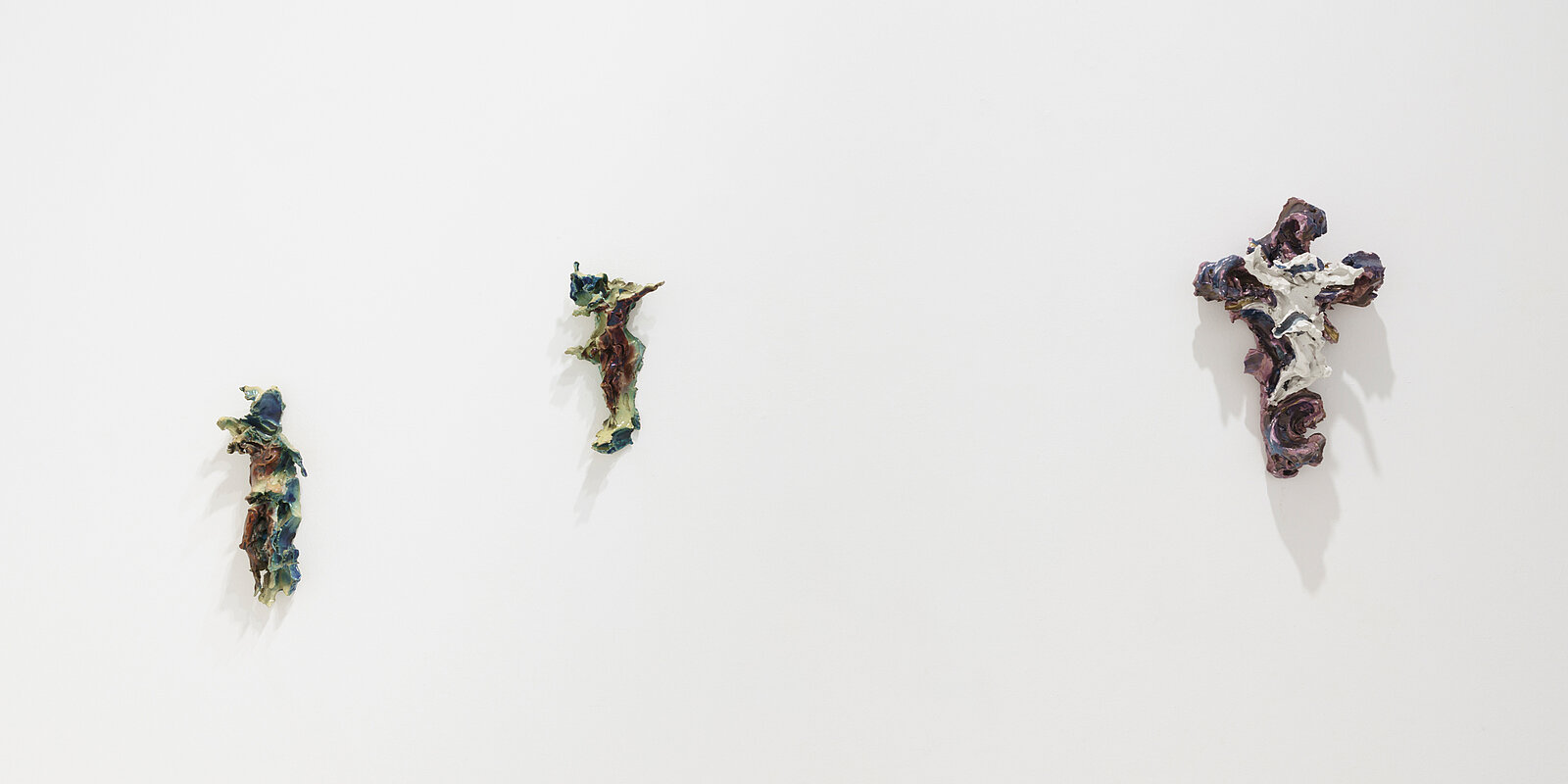Lucio Fontana: Ceramics

Galerie Karsten Greve Cologne
Tuesday - Friday 10 am - 6.30 pm
Saturday 10 am - 6 pm
Opening
on Wednesday, November 18, 2020, 10 am - 6.30 pm
extended until February 27, 2021
Book individual appointment
© Nicolas Brasseur and Galerie Karsten Greve
"Io sono uno scultore e non un ceramista."
Lucio Fontana: La mia ceramica, in Tempo, Milan, September 21,1939
Galerie Karsten Greve is delighted to present the solo exhibition LUCIO FONTANA Ceramics featuring an exquisite selection of ceramics and important works on paper by Lucio Fontana in Cologne. Since 1977, Galerie Karsten Greve has represented the Argentinian-Italian avant-garde artist, who spent his whole life focusing on sculpture and searching for a new dimension, and dedicated comprehensive exhibitions and four catalogues to his work.
LUCIO FONTANA Ceramics is the eighth one-man show to open at Karsten Greve’s Cologne gallery. A total of about fourty pieces will be shown in the context of Fontana’s avant-garde oeuvre, including ceramic sculptures and so-called Concetti spaziali (“spatial concepts”) as well as works on paper known as Ambienti spaziali.
In Lucio Fontana’s early years, during various sessions in the famous ceramics workshops in Albisola in 1934 and 1936, the artist created remarkable sculptures inspired by natural forms such as Coccodrillo (Crocodile), and more amorphous pieces including Conchiglia e Polpo (Sea shell and octopus)or Farfalla e Conchiglia (Butterfly and sea shell). Ceramics painted with glaze colors dominated from 1936 when Fontana returned to figurative sculpture. During a session at the porcelain factory of Sèvres near Paris in 1937, he created heads, figures, animals, and still lifes characterized by expressive dynamics, specifically textured surfaces, and opalescent colors. The series of polychrome ceramic sculptures that Lucio Fontana made in that period include two popular figures from the Italian Commedia dell’arte, Arlecchino and Colombina, terracotta sculptures that almost dissolve in their terpsichorean representation of movement.
Born in Rosario, in the province of Santa Fe, Argentina, in 1899, to Italian immigrant parents, Lucio Fontana spent the first years of his life in Milan, enrolling at a school of engineering in 1914. Returning to Argentina in 1922, he worked in his father's sculpture studio before opening one of his own in 1924. Towards the end of the 1920s, he went back to Italy to study at the Accademia di Brera, as a student of sculptor Adolfo Wildt, for two years. From 1939, he lived in Argentina again, and, after settling in Buenos Aires in 1940, Fontana became a teacher at the Altamira art school. During this period, he worked on the Manifiesto Blanco, in which he called for a synthesis of the arts and the abolition of conventional materials, propagating the dimensions of time and movement in space instead. In 1947, Lucio Fontana returned to Milan, where he founded the „Movimento spaziale“ group of artists, published two manifestos of Spazialismo, and went on to become one of the most distinguished avant-garde artists of the first post-war generation. He died in Comabbio (Varese) in 1968.

Having returned to Italy in 1947, Fontana created his first works corresponding to his new conception of space as put into words for the first time in his theoretical treatise, Manifiesto Blanco. From this time forth, the artist was to refer to his works by the title of Concetto spaziale. The appropriation of space based on expressive, dynamic gestures manifests itself in the upward movement of the figures in the group of works known as Crocifissi (Crucifixes) and Crocifissioni (Crucifixions). As evidenced by the bulging of the draped loincloth of Christ and the sweeping folds of the robe, Lucio Fontana processed the clay with a view to spatial expansion in a baroque style. These ceramics are particularly fascinating as they allow Fontana’s spatial concept to be experienced in a sensual manner.
Since the 1930s, Lucio Fontana’s works have regularly been presented in international solo and group exhibitions, including at the XXIV Biennale di Venezia (1948), documenta II (1959) and documenta IV (1968), Centre Georges Pompidou, Paris (1987), Museum Moderner Kunst Stiftung Ludwig, Vienna (1996/97), Hayward Gallery, London (1999-2000), Metropolitan Museum of Art, New York (2019), Galleria Borghese, Rome (2019), and the Museum of Modern Art, Moscow (2019/20); his works are part of the public collections of international institutions such as The Art Institute of Chicago, United States, Museum Ludwig in Cologne, Tate Modern in London, Pinakothek der Moderne in Munich, the Museum of Modern Art, New York, or The National Museum of Modern Art in Tokyo.



